Resistance
Collected Treasures of Icelandic Art
3.2.2023 — 26.3.2028

Resistance is an interdisciplinary exhibition for children of all ages, that bridges the gap between visual arts and science. The works in the exhibition are all in the collection of the National Gallery of Iceland. The word resistance refers to opposition in general, but it may also be read in the context of physics: the measure of a conductive material’s opposition to current flow. Resistance also signifies opposition to consumption, which we must all learn to take onboard. And resistance references essential action which must be taken by the inhabitants of this planet, against climate change.
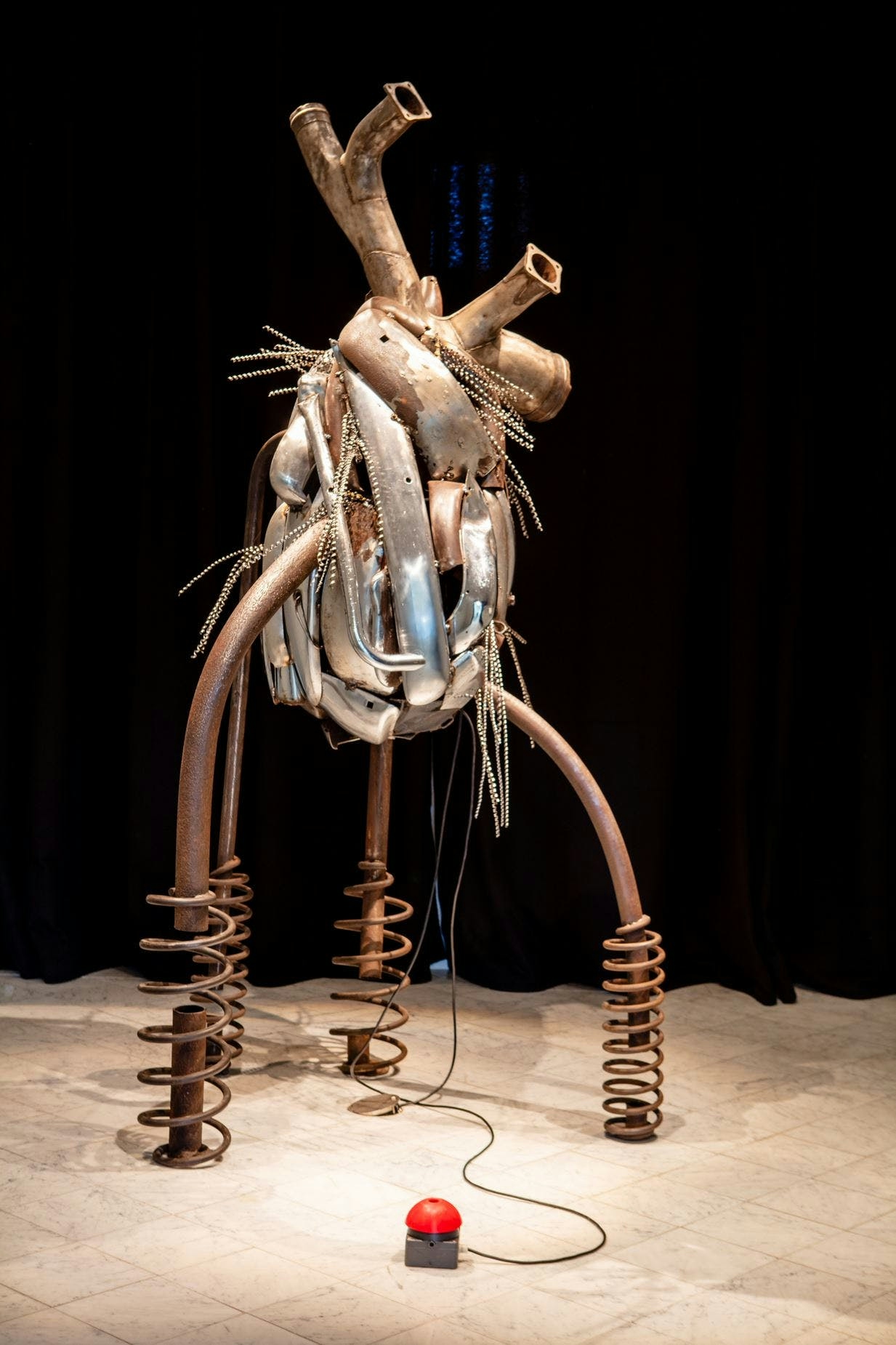
Jón Gunnar Árnason 1931-1989
Hjartað, 1968
The works of art in the exhibition all relate to the discourse on sustainability, and ethical issues relating to efforts that may enhance sustainability. These works offer the opportunity to consider existence, nature, and other people: how people choose to lead their lives, and the influence they wish to have. In order to establish the conditions for a good life, many different factors must be taken into account – and not least the reciprocal effects between them. The key to sustainability is to live one’s life is such a way as to maintain a good life, while not reducing other people’s quality of life.
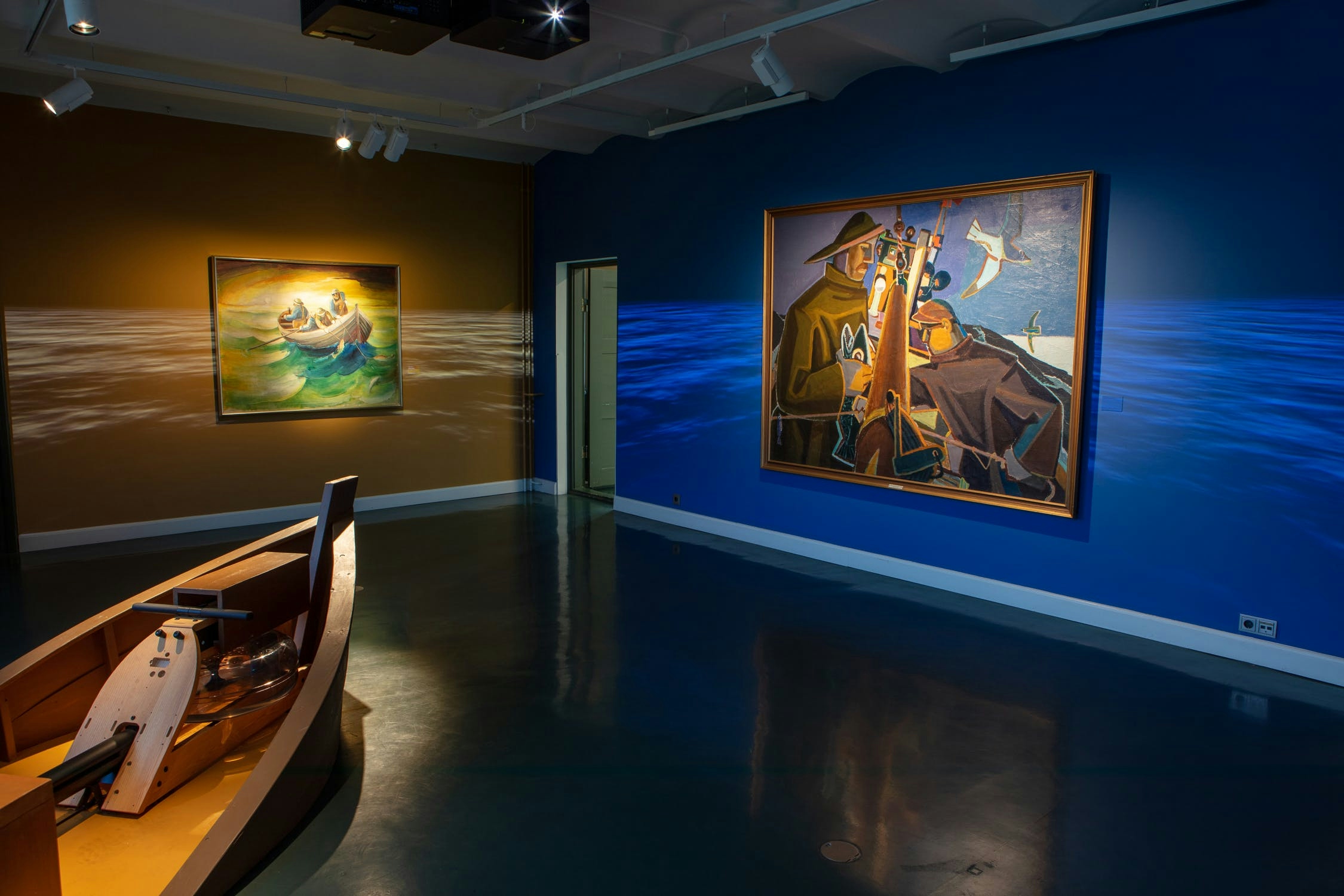
Art and artistic strategies can raise urgent questions, and may even change how people see the world. In the House of Collections an opportunity is offered to explore, to connect and to create, in a dialogue with the works of art on display. Visitors are urged to give thought to their own experience vis-à-vis the content of the works. In this way, art may provide resistance, and promote the desire to take part in transforming society in the direction of a sustainable future.
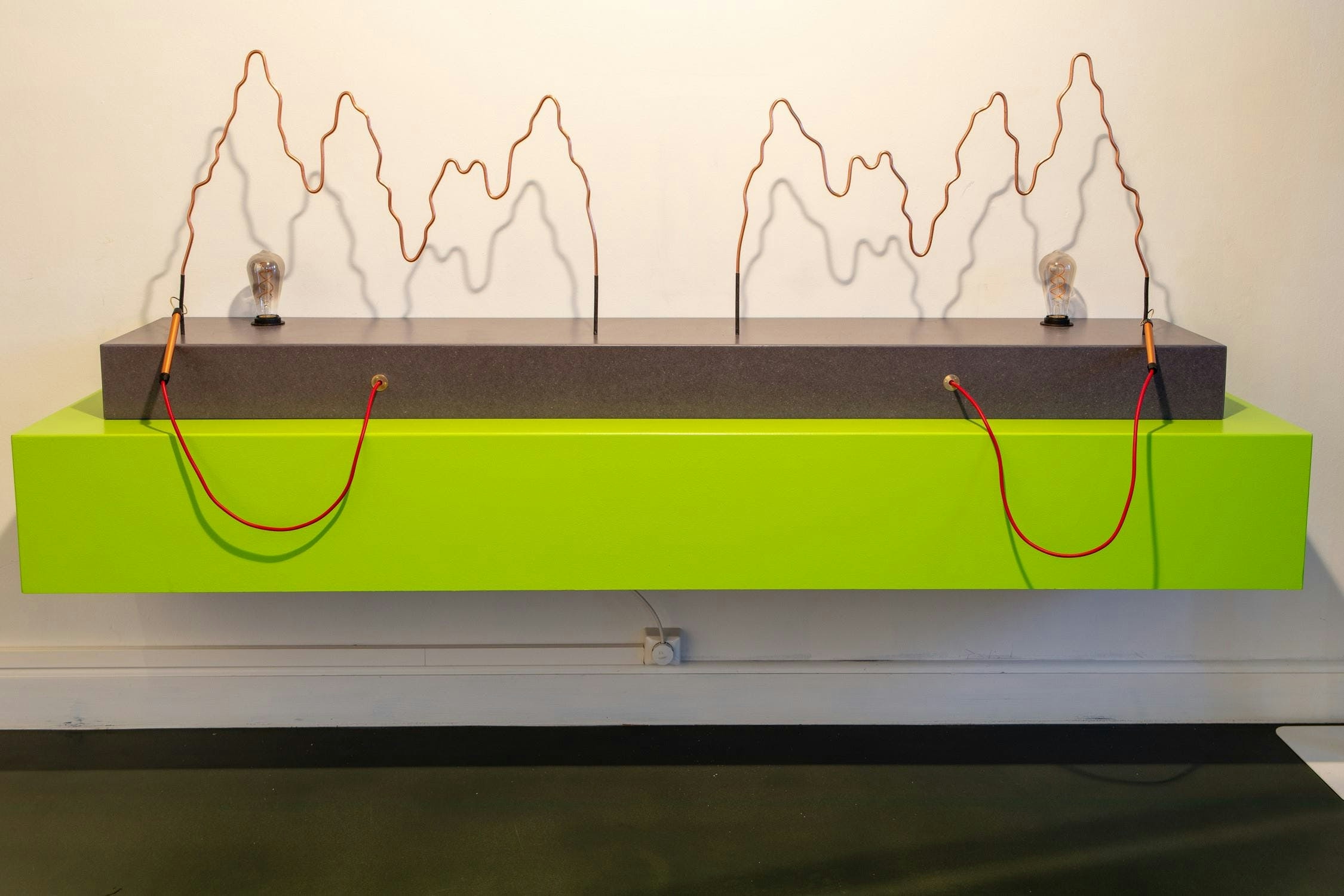
Air
On Level 4, the visitor explores the atmosphere and the Icelandic uplands, an active volcanic zone in a state of constant formation. Volcanic eruptions can be catastrophic: ash and pumice may be dispersed widely – especially when an eruption takes place under an icecap or on the sea floor. In daily life, the volcanoes that lie hidden beneath the glaciers tend to be forgotten, and the focus is on the landscape, with the diverse hues of the glacier’s surface brought out by ever-changing light conditions.
Here we see representations of Icelandic glaciers that are in rapid retreat due to climate change. Emissions of greenhouse gases produced by humanity give rise to climate change, and the impact on the planet includes shrinking glaciers and more extreme weather events. That entails more precipitation, leading to floods, landslides, and poorer water quality – and in some areas reduced water resources.
Space science helps to shed light on climate conditions. As the earth is one of the planets of the Milky Way, we can learn much about climate by studying space. Around the earth is a network of satellites, orbiting hundreds of kilometres above the surface. Research data from the satellites proves beyond doubt that over the past century the temperature on earth has risen faster than ever before, due to human actions.
The approach of the artists represented here varies from realist portrayal of nature to exploration of the marvels that nature contains. They point to what is universal in the ecosystem, and what is unique.
Artists
Anna Hallin and Olga Bergmann, Ásgerður Búadóttir, Ásgrímur Jónsson, Björg Þorsteinsdóttir, Emanuel Larsen, Finnur Jónsson, Brynhildur Þorgeirsdóttir, Georg Guðni Hauksson, Guðmunda Andrésdóttir, Guðbjörg Lind Jónsdóttir, Guðmundur Einarsson of Miðdalur, Guðrún Gunnarsdóttir, Hildigunnur Birgisdóttir, Hjörleifur Sigurðsson, Hrafnhildur Arnardóttir, Hreinn Friðfinnsson, Jóhannes S. Kjarval, Jón Reykdal, Júlíana Sveinsdóttir, Kristbergur Pétursson, Kristinn G. Harðarson, Kristín Jónsdóttir, Kristín Jónsdóttir from Munkaþverá, Magnús Á. Árnason, Magnús Sigurðarson, Nína Tryggvadóttir, Ólöf Einarsdóttir, Ragna Róbertsdóttir, Steina, Svavar Guðnason, Valgerður Hauksdóttir, Þorbjörg Höskuldsdóttir, Þórarinn B. Þorláksson, Þórdís Erla Zoëga, Þórður Hall.

Land
Artists have always sought inspiration in land and nature. Works on Level 3 relate to earth, biodiversity, flora and fauna. Soil is of vital importance in the ecosystem – and not least to humanity, for it is the foundation of all food production. In past times the homes people lived in were not necessarily clearly differentiated from the land where they stood. The traditional Icelandic turf house is a good example of sustainable design, in which locally-available materials were used for building. Perhaps people may have had a closer bond to nature for that reason?
The works depict plants of many kinds, and variants of the same species. Seasonal changes in nature may also be observed. Humans have changed the ecosystem by their actions – either intentionally, in order to adapt the land to their needs, for instance in agriculture – or incidentally, e.g. by pollution of the environment. With increases in human activities and technology, such impacts are now greater than ever before. For nature, the consequences are dire.
Birds make up a large majority of Iceland’s visible fauna: about 75 bird species breed regularly in Iceland, and more than 100 species are known to have bred here at least once.
Water is an essential resource. Clean water and sanitation are among humanity’s essential needs. For that reason, clean water is one of the UN Sustainable Development Goals. The works here depict our relationship with water. It is important that people all over the world should have access to safe drinking water.
Artists
Ásgrímur Jónsson, Ásta Ólafsdóttir, Bryndís Snæbjörnsdóttir and Mark Wilson,Daníel Magnússon, Eggert Pétursson, Einar Falur Ingólfsson, Finnur Jónsson,Guðrún Vera Hjartardóttir, Gunnhildur Hauksdóttir,Gunnlaugur Scheving, Höskuldur Björnsson, Jón Engilberts, Hulda Hákon, Jón Stefánsson, Jóhannes S. Kjarval, Kristín Jónsdóttir, Magnús Pálsson, Margrét Elíasdóttir, Kristín Jónsdóttir, Ólafur Elíasson, Ólöf Nordal, Róska, Sara Björnsdóttir, Sigga Björg Sigurðardóttir, Sigríður María Gunnarsson, Sigurður Guðmundsson, Sigurlaug Jónasdóttir,Steina,Þórarinn B. Þorláksson.
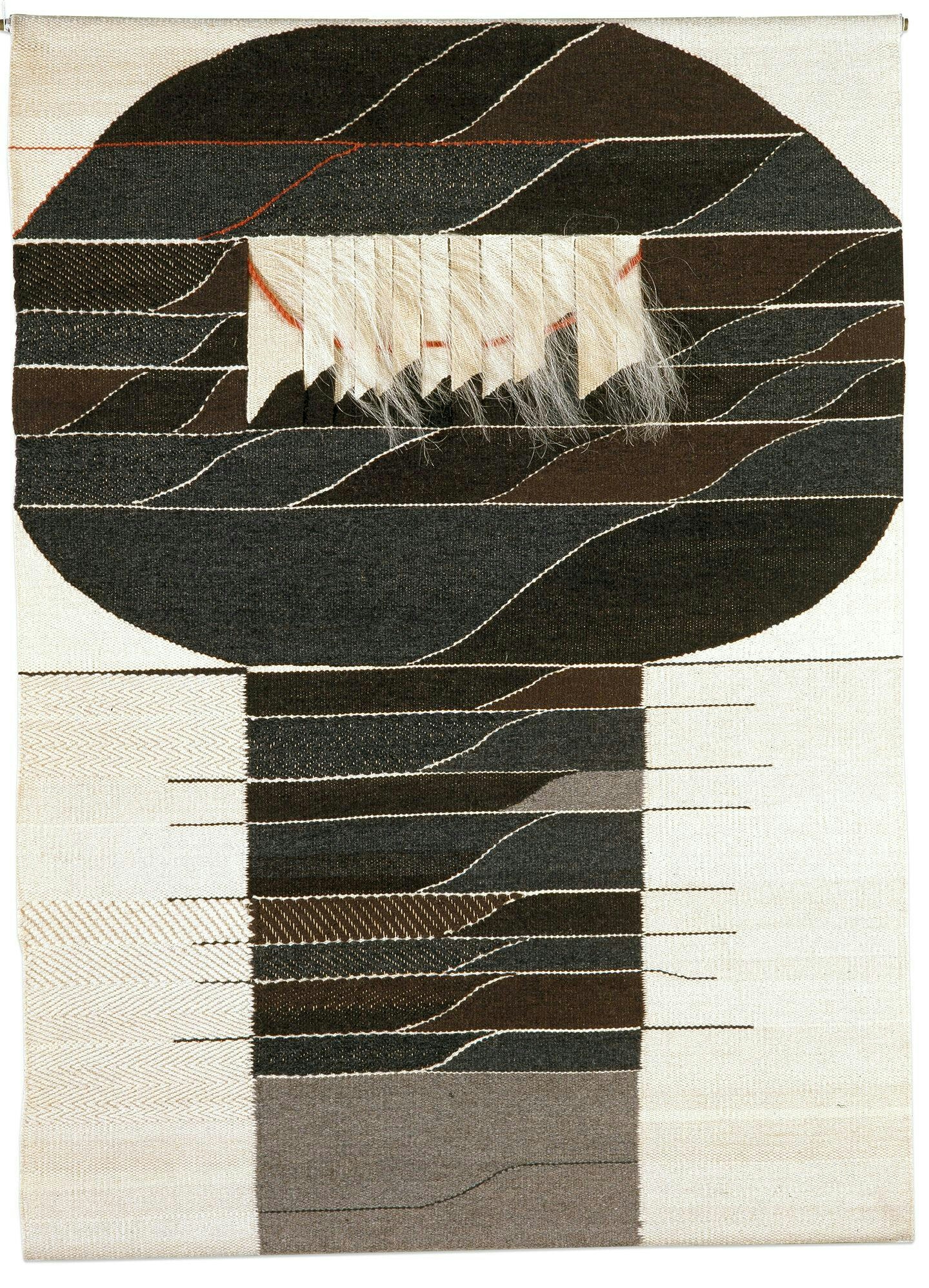
Ásgerður Búadóttir 1920-2014
Skarðatungl, 1976
Ocean
The sea inspires many artists. Some portray its beauty, while others explore what the ocean gives, and what it takes away. The world’s oceans are all interconnected, covering 70% of the earth’s surface. The oceans propel global systems that enable human beings to live on the planet. Over the centuries, the fisheries have been a vital pillar of the Icelandic economy. Seafarers have battled the waves to bring in their catches, and that has led to loss of fishing vessels and their crews. Fish was dried, salted and later frozen all around Iceland’s shores, shaping the culture of fishing villages.
Some of the works depict different views of the ocean, in which humans either form part of nature, or dominate it. Changes are also evident in the relationship between humans and the sea. It is essential to remember that the earth is a closed system, made up of complex cycles. The ocean plays a key role in the earth’s water resources, as it is the basis of the cyclical circulation of water from the sea to the atmosphere, to the land and back to the sea. Nature is grounded in a delicate equilibrium; if this is disrupted, for instance by global heating, the consequences may be grave for life on earth.
The seas are full of organisms, from miniscule microbes to the largest animals on earth. With rising pollution by humans, carbon dioxide (CO2) levels in the atmosphere have risen, and this leads to increased absorption of CO2 by the seas. Climate change has wide-ranging impacts on the ocean, from acidification and changes in ocean currents to loss of biodiversity and changes to fish migration patterns.
Artists
Birgir Andrésson, Birgir Snæbjörn Birgisson, Björg Þorsteinsdóttir, Edvard Munch, Finnur Arnar Arnarson, Finnur Jónsson, the Icelandic Love Corporation, Guðmundur Benediktsson, Gunnlaugur Blöndal, Gunnlaugur Scheving, Halldór Ásgeirsson, Helgi Þorgils Friðjónsson, Hildur Hákonardóttir, Hólmfríður Árnadóttir, Hrafnkell Sigurðsson, Hreinn Friðfinnsson, Jóhannes S. Kjarval, Jón Stefánsson, Júlíana Sveinsdóttir, Karl Kerúlf Einarsson Dunganon, Kristbergur Pétursson, Kristinn G. Harðarson, Kristín Jónsdóttir, Magnús Sigurðarson, Sindri Leifsson, Valtýr Pétursson.

Halldór Ásgeirsson 1956-
Frá augnabliki til augnabliks, 1999-2000
Principles
Artists have always engaged with multidisciplinary issues. Here the subject relates to the laws of nature in the fields of physics and chemistry: everything from concepts in physics about vibrating strings, chaos theory and wave theory to facts about the magnetic field of the planet. The work of artists and scientists is characterised by both creative and analytical thinking. In the same way that science provides inspiration to artists, a work of art may bring out unique and often unexpected perspectives that challenge scientific ideas and principles. The culture of arts appears to differ from that of sciences: scientists are seen as objective and rational, while artists are perceived as subjective and insightful. Sometimes these cultures are portrayed as mutually exclusive, but that has not always been the case.
Nothing in the world stands alone. Everything is a link in a chain, connected to all the other links. This global chain must remain intact. Chain reactions unite all things and processes into one whole, thus establishing the premises for equilibrium. Everything in the world, including the human body, is made up of energy, which bonds and unites in closed cycles. The world’s ecosystem is contingent upon powers connected by chain reactions, like the cogwheels of a clockwork mechanism. If one of the cogwheels is irreversibly damaged, the equilibrium will also be irreversibly disrupted. Energy is the foundation of all matter and affects everything else. The energy that forms one human being also forms all other living things. Energy is in constant flow and always changing.
Artists
Anna Rún Tryggvadóttir, Davíð Örn Halldórsson, Dodda Maggý, Eirún Sigurðardóttir, Erla Þórarinsdóttir, Eyborg Guðmundsdóttir, Finnur Jónsson, Gerður Helgadóttir, Guðmunda Andrésdóttir, Jóhannes S. Kjarval, Jón B.K. Ransu,Karl Kvaran, Kristinn E. Hrafnsson,Kristján Guðmundsson, Pétur Thomsen, Libia Castro og Ólafur Ólafsson, Louisa Matthíasdóttir,Magnús Helgason, Rósa Guðný Ingimarsdóttir, Sigrid Valtingojer, Sigurður Árni Sigurðsson, Tumi Magnússon, Þorvaldur Skúlason.
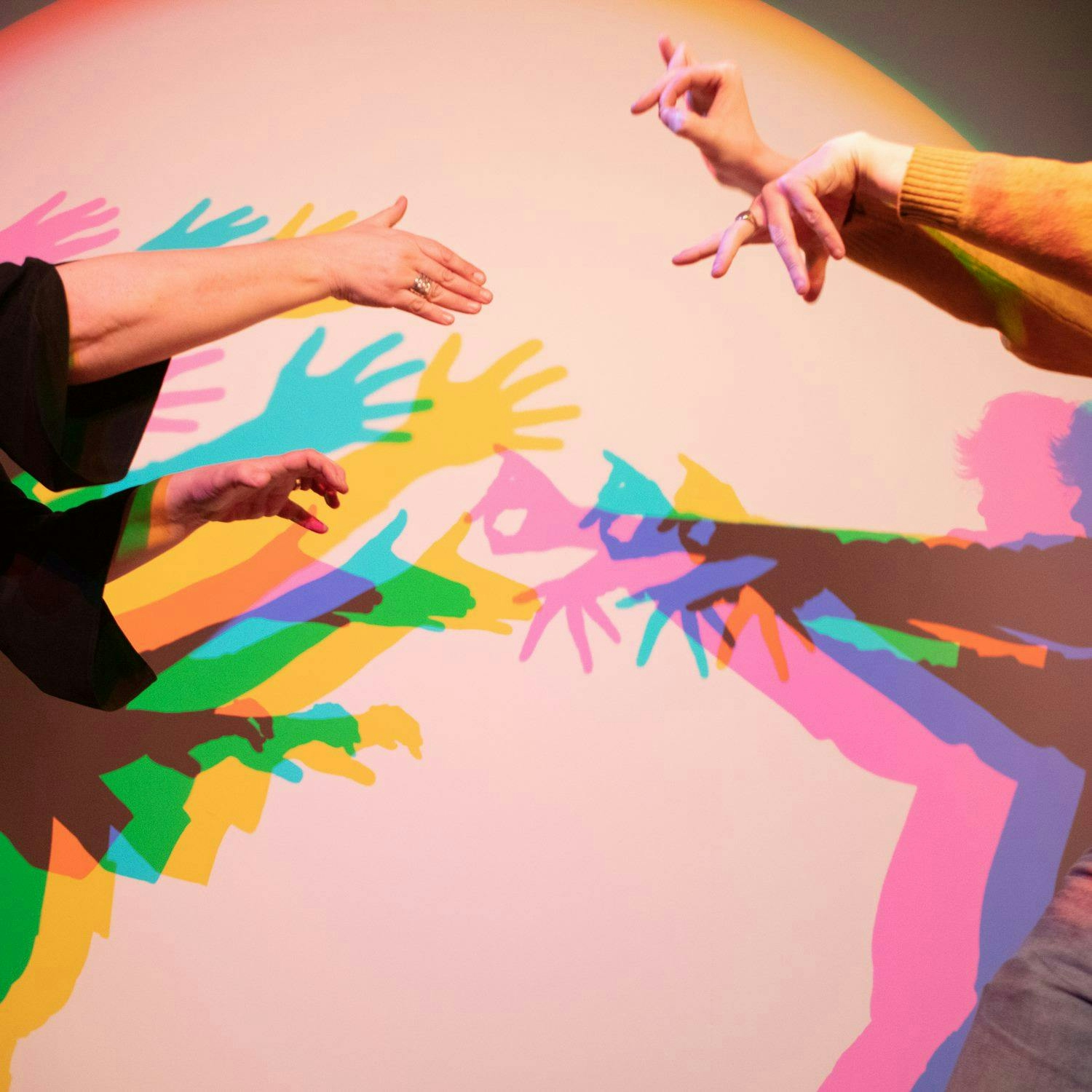
Play
In the basement of the House of Collections is a world of folklore and fairy tales that have been passed down orally over the centuries. Folktales can be mystical, as they combine elements of the imaginary with everyday reality. Like works of art, folklore provides a wide range of inspiration – not only in books, but in film, video games, advertising and works of art, as displayed here. Folk and fairy tales have served to entertain, educate, and provide guidance about how to behave.
Exploring folklore may help us to understand and respond to powerful emotions about life on our planet. Folk and fairy tales occur in a different reality from our own, thus activating the imagination, opening up a dream-world where fantastical things can happen. Animals may acquire human attributes, such as the power of speech. Characters play different roles: kindly elves may appear, to guide lost travellers ; while lurking scoundrels often place obstacles in a human’s path. In most folk and fairy tales the villains are thwarted and the hero or heroine lives happily ever after. Importantly, the tales often contain benevolent characters that help the hero or heroine with the problems they face. The stories teach us that there is both good and evil in the world, and that when we are guided by positive values, kindness and love, good will prevail, with the assistance of those who are willing to help others. It is important for all to be participants in our common responsibility to improve prospects for attaining sustainability.
Artist
Ásgrímur Jónsson
3.2.2023 — 26.3.2028
Photo credit
Dodda Maggý, born 1981
DeCore (aurae), 2012
LÍ-9200
Curator
Ásthildur Jónsdóttir
Curatorial Team
Ásthildur Jónsdóttir
Dagný Heiðdal
Guðrún Jóna Halldórsdóttir
Harpa Þórsdóttir
Ragnheiður Vignisdóttir
Exhibition Designer
Axel Hallkell Jóhannesson
Marketing and Promotion
Guðrún Jóna Halldórsdóttir
Events and Educational Programme
Ragnheiður Vignisdóttir
Technical Supervision, Photography and Recordings
Sigurður Gunnarsson
Installation
Dagný Heiðdal
Gylfi Freeland Sigurðsson
Indriði Arna Ingólfsson
Annahita Asgari
Resistance










